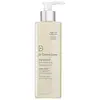What's inside
What's inside
 Key Ingredients
Key Ingredients

 Benefits
Benefits

 Concerns
Concerns

 Ingredients Side-by-side
Ingredients Side-by-side

Water
Skin ConditioningDipropylene Glycol
HumectantButylene Glycol
Humectant1,2-Hexanediol
Skin ConditioningHydroxyacetophenone
AntioxidantBetaine Salicylate
AntimicrobialOctyldodeceth-16
EmulsifyingHydroxyethyl Urea
HumectantTromethamine
BufferingBetaine
HumectantSodium Citrate
BufferingCitric Acid
BufferingDisodium EDTA
Melaleuca Alternifolia Leaf Oil
AntioxidantGlycerin
HumectantGluconolactone
Skin ConditioningAllantoin
Skin ConditioningPanthenol
Skin ConditioningPentylene Glycol
Skin ConditioningCryptomeria Japonica Leaf Extract
HumectantNelumbo Nucifera Leaf Extract
Skin ConditioningSaccharomyces Ferment Filtrate
HumectantCentella Asiatica Extract
CleansingGypsophila Paniculata Root Extract
Skin ConditioningCapryloyl Salicylic Acid
ExfoliatingBeta-Glucan
Skin ConditioningEthylhexylglycerin
Skin ConditioningAspartic Acid
MaskingAcetyl Hexapeptide-8
HumectantWater, Dipropylene Glycol, Butylene Glycol, 1,2-Hexanediol, Hydroxyacetophenone, Betaine Salicylate, Octyldodeceth-16, Hydroxyethyl Urea, Tromethamine, Betaine, Sodium Citrate, Citric Acid, Disodium EDTA, Melaleuca Alternifolia Leaf Oil, Glycerin, Gluconolactone, Allantoin, Panthenol, Pentylene Glycol, Cryptomeria Japonica Leaf Extract, Nelumbo Nucifera Leaf Extract, Saccharomyces Ferment Filtrate, Centella Asiatica Extract, Gypsophila Paniculata Root Extract, Capryloyl Salicylic Acid, Beta-Glucan, Ethylhexylglycerin, Aspartic Acid, Acetyl Hexapeptide-8
Water
Skin ConditioningGlycerin
HumectantSodium Lauroyl Methyl Isethionate
CleansingPropanediol
SolventSodium Cocoamphoacetate
CleansingCocamidopropyl Hydroxysultaine
CleansingDisteareth-75 Ipdi
Glycereth-7 Caprylate/Caprate
EmulsifyingSodium Chloride
MaskingTrisodium Ethylenediamine Disuccinate
PEG-40 Hydrogenated Castor Oil
EmulsifyingMandelic Acid
AntimicrobialGlycolic Acid
BufferingSalix Alba Bark Extract
AstringentPhytic Acid
Potassium Azeloyl Diglycinate
Skin ConditioningCitric Acid
BufferingFarnesol
PerfumingBarosma Betulina Leaf Extract
PerfumingSodium PCA
HumectantSodium Hyaluronate
HumectantTremella Fuciformis Extract
HumectantAloe Barbadensis Leaf Juice
Skin ConditioningBisabolol
MaskingHydrolyzed Soy Protein
HumectantCamellia Sinensis Leaf Extract
AntimicrobialButylene Glycol
HumectantCaprylic/Capric Triglyceride
MaskingDimethyl Isosorbide
SolventAlcohol
AntimicrobialSodium Phytate
Jasminum Officinale Flower/Leaf Extract
MaskingVitis Vinifera Fruit Extract
Skin ConditioningLavandula Angustifolia Flower/Leaf/Stem Extract
MaskingEugenia Caryophyllus Flower Extract
AstringentPolyglyceryl-3 Laurate
EmulsifyingPEG-7 Glyceryl Cocoate
EmulsifyingSodium Hydroxide
BufferingBenzoic Acid
MaskingSodium Benzoate
MaskingPotassium Sorbate
PreservativePhenoxyethanol
PreservativeWater, Glycerin, Sodium Lauroyl Methyl Isethionate, Propanediol, Sodium Cocoamphoacetate, Cocamidopropyl Hydroxysultaine, Disteareth-75 Ipdi, Glycereth-7 Caprylate/Caprate, Sodium Chloride, Trisodium Ethylenediamine Disuccinate, PEG-40 Hydrogenated Castor Oil, Mandelic Acid, Glycolic Acid, Salix Alba Bark Extract, Phytic Acid, Potassium Azeloyl Diglycinate, Citric Acid, Farnesol, Barosma Betulina Leaf Extract, Sodium PCA, Sodium Hyaluronate, Tremella Fuciformis Extract, Aloe Barbadensis Leaf Juice, Bisabolol, Hydrolyzed Soy Protein, Camellia Sinensis Leaf Extract, Butylene Glycol, Caprylic/Capric Triglyceride, Dimethyl Isosorbide, Alcohol, Sodium Phytate, Jasminum Officinale Flower/Leaf Extract, Vitis Vinifera Fruit Extract, Lavandula Angustifolia Flower/Leaf/Stem Extract, Eugenia Caryophyllus Flower Extract, Polyglyceryl-3 Laurate, PEG-7 Glyceryl Cocoate, Sodium Hydroxide, Benzoic Acid, Sodium Benzoate, Potassium Sorbate, Phenoxyethanol
 Reviews
Reviews

Ingredients Explained
These ingredients are found in both products.
Ingredients higher up in an ingredient list are typically present in a larger amount.
Butylene Glycol (or BG) is used within cosmetic products for a few different reasons:
Overall, Butylene Glycol is a safe and well-rounded ingredient that works well with other ingredients.
Though this ingredient works well with most skin types, some people with sensitive skin may experience a reaction such as allergic rashes, closed comedones, or itchiness.
Learn more about Butylene GlycolCitric Acid is an alpha hydroxy acid (AHA) naturally found in citrus fruits like oranges, lemons, and limes.
Like other AHAs, citric acid can exfoliate skin by breaking down the bonds that hold dead skin cells together. This helps reveal smoother and brighter skin underneath.
However, this exfoliating effect only happens at high concentrations (20%) which can be hard to find in cosmetic products.
Due to this, citric acid is usually included in small amounts as a pH adjuster. This helps keep products slightly more acidic and compatible with skin's natural pH.
In skincare formulas, citric acid can:
While it can provide some skin benefits, research shows lactic acid and glycolic acid are generally more effective and less irritating exfoliants.
Most citric acid used in skincare today is made by fermenting sugars (usually from molasses). This synthetic version is identical to the natural citrus form but easier to stabilize and use in formulations.
Read more about some other popular AHA's here:
Learn more about Citric AcidGlycerin is already naturally found in your skin. It helps moisturize and protect your skin.
A study from 2016 found glycerin to be more effective as a humectant than AHAs and hyaluronic acid.
As a humectant, it helps the skin stay hydrated by pulling moisture to your skin. The low molecular weight of glycerin allows it to pull moisture into the deeper layers of your skin.
Hydrated skin improves your skin barrier; Your skin barrier helps protect against irritants and bacteria.
Glycerin has also been found to have antimicrobial and antiviral properties. Due to these properties, glycerin is often used in wound and burn treatments.
In cosmetics, glycerin is usually derived from plants such as soybean or palm. However, it can also be sourced from animals, such as tallow or animal fat.
This ingredient is organic, colorless, odorless, and non-toxic.
Glycerin is the name for this ingredient in American English. British English uses Glycerol/Glycerine.
Learn more about GlycerinWater. It's the most common cosmetic ingredient of all. You'll usually see it at the top of ingredient lists, meaning that it makes up the largest part of the product.
So why is it so popular? Water most often acts as a solvent - this means that it helps dissolve other ingredients into the formulation.
You'll also recognize water as that liquid we all need to stay alive. If you see this, drink a glass of water. Stay hydrated!
Learn more about Water